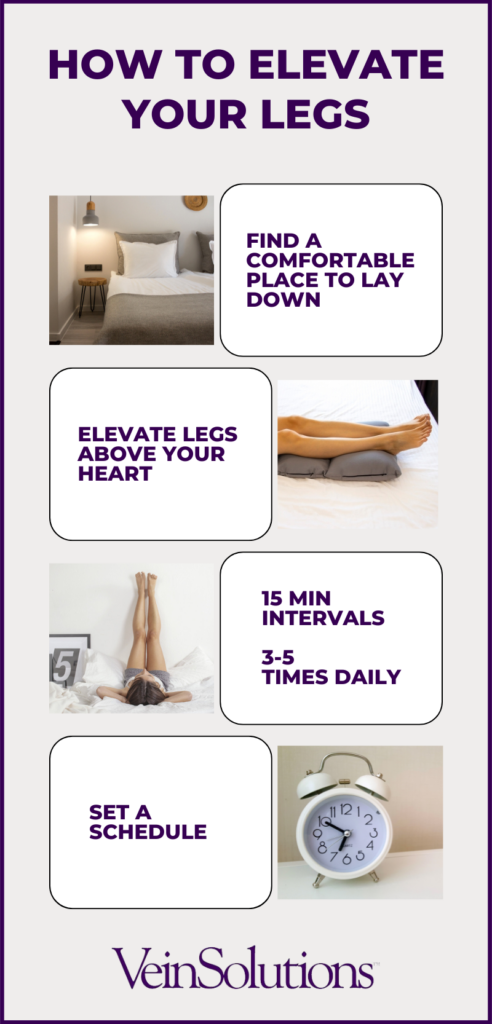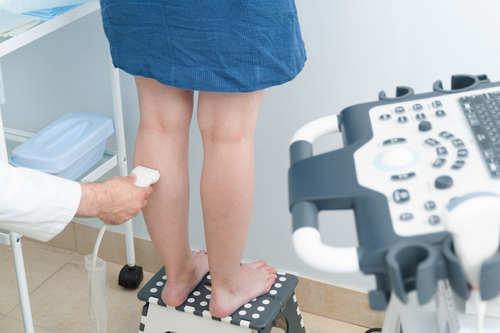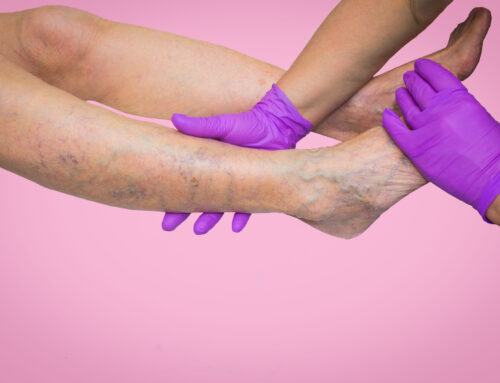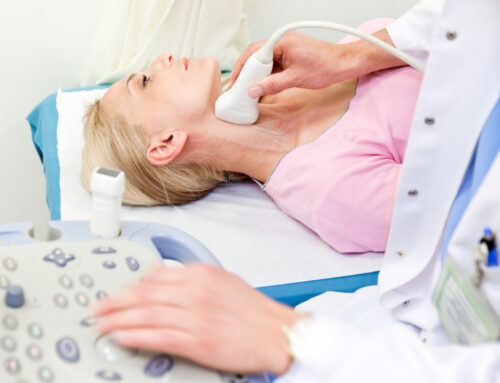Many people think that varicose veins are a permanent and uncomfortable condition that you can’t do anything about. The truth, however, is that you can do plenty of things to ease symptoms and improve the appearance of varicose veins. From minimally invasive medical procedures to compression stockings and at-home self-care, there are plenty of steps you can take.
Elevating Legs
Today, we’ll talk about how to elevate your legs – a straightforward home remedy for varicose veins.
Benefits Of Elevating Legs
- Varicose vein relief: Similarly to exercise, elevating the legs helps improve blood circulation. As the blood begins flowing more freely, this can also help with inflammation and/or mild swelling caused by pooling blood. Leg elevation is one of the easiest ways to treat varicose vein symptoms at home and requires only a small amount of time.
- Improved Lymphatic Drainage: Reduces fluid buildup in tissues. Supports efficient lymphatic system function. Enhances the body’s ability to drain excess fluids, promoting overall tissue health.
- Alleviation of Leg Fatigue: Relieves heaviness and tiredness in the legs. Enhances overall blood circulation. It is particularly beneficial for those with professions requiring prolonged periods of standing or sitting.
Leg elevation can be beneficial to a wide variety of people — patients with vein conditions, pregnant women, and even healthy adults. Do keep in mind, however, that elevating legs won’t cure or permanently get rid of damaged veins. It’s a self-care tactic to ease mild discomfort and improve your overall blood flow.
How To Elevate Your Legs
As we mentioned before, elevating your legs can have lots of positive effects on your health. Here are some easy steps for elevating your legs correctly:
- Find a comfortable place to lie down. This can be a couch, bed, or any other soft surface with good back support.
- Prop your legs up so that they are above your heart level. This can be done by using pillows or a soft leg elevation “wedge.” Try to keep your feet and calves slightly elevated as well. Don’t allow them to hang off the edge of your couch.
- Keep your legs elevated for about 15 minutes, and repeat this three to four times daily.
You may also utilize the wall for an alternative exercise. Lie on the floor, slide your buttocks to the wall, and place a pillow under your head. Extend your legs upward, resting them against the wall with a straight posture. This technique, frequently employed in yoga, is highly praised by many practitioners as a favored stretching exercise. Ensure that you maintain the position for only 5 to 10 minutes to prevent excessive strain on your heels, knees, or spine.
For an added benefit throughout the day, rotate your feet and ankles to help with circulation. You can also flex and release your calf muscles and thigh muscles occasionally to promote blood circulation in your legs.
The most important tip to remember is to do everything in moderation. You don’t need to elevate your legs all day, just occasionally. Also, don’t forget to consult with your doctor before trying out leg elevation.

Common Mistakes To Avoid
Now that we’ve talked about how to elevate your legs let’s talk about the “don’ts” of leg elevation. Here are a few of the most commonly made mistakes.
Not elevating legs often enough.
Similarly to eating healthy or exercising, the elevation of your legs must be done regularly to see an effect. Try elevating your legs about three to four times a day. This can be done while watching tv, eating, or resting on the couch. Incorporating leg elevation into your nightly routine makes it easy to remember and prepares your body for rest. It’s an easy, low-maintenance way to improve your vein health.
Elevating legs for too little time.
Unfortunately, elevating your legs isn’t a five-second cure. Elevating the legs should be done in approximately 15-minute intervals.
Bending your legs at the knee.

Many people think that as long as you prop your thighs up, that gets the job done. Unfortunately, though, this is only half the job. It’s just as important to lift your calves and feet up as well. That’s why elevating your legs with big pillows is a great way to go. It ensures that your entire leg has support. Don’t try to simply hang your legs off the side of the couch. This can hamper the blood in your lower legs and keep it from smoothly traveling back up to the heart.
Not raising your legs high enough.
Try to elevate your legs above the heart line. This ensures that there’s enough of an angle to allow your blood to flow back toward your heart.
Leg Elevation Pillow
One of the best ways to ensure that you raise your legs high enough and at the right angle is by using a leg elevation pillow. This type of pillow is specially designed to give you a gentle but effective incline while lying down. Do some online research or ask your doctor for advice in picking out the correct leg elevation pillow for you. These pillows can be found online and often come in various sizes, colors, and shapes.
Not combining it with other treatments.
As we mentioned earlier, elevating the legs can be a great tool for patients with varicose veins. Having said that, it’s not a permanent fix. It’s more of a consistent practice that can help alleviate symptoms. Medical treatment is still the only way to get rid of varicose or spider veins permanently. Ask your doctor about treatments such as sclerotherapy, venous ablation, and microphlebectomy.
Additionally, elevating the legs mainly helps with discomfort. For aesthetic concerns, you’ll still want to use things such as concealer, tanning lotion, or body makeup.
Not setting a regular schedule.
It’s easy to forget those small daily health habits that we need to do. Eating healthy, exercising, and elevating your legs. The easiest way to keep track of these is by making them a part of your daily schedule.
You can also incorporate leg elevation into things you’re already doing. For example, try propping a pillow under your legs while watching tv or listening to music. It’s both comfy and good for your blood circulation.
Frequently Asked Questions
Now that we’ve gone over some of the do’s and don’t of elevating your legs, check out these last few F.A.Q’s.
How Long Should You Elevate Your Legs?
Most people can benefit from elevating their legs for 15-20 minute intervals. Ask your doctor or vein specialist about the best way to elevate your legs.
Where Does The Fluid Go When You Elevate Your Legs?
The main benefit associated with raising your legs is that the elevation allows for blood to flow back toward the heart. This decreases the pressure in your damaged veins and helps reduce discomfort.
What Are Varicose Veins?
Varicose veins are veins with damaged valves that are no longer able to push blood along as they need to. The result is that blood begins pooling in the vein and strains against the walls of the vein. This results in a purplish/blue vein and a twisted or bulging appearance. In contrast, spider veins can be identified by their smaller and more web-like appearance.
Both of these conditions are considered largely cosmetic and typically have little impact on your physical health.
Why Do Veins Pop Out?
As we mentioned above, varicose veins can make veins appear to “bulge” or “pop out.” Having said that, certain intense physical activities can cause veins to bulge temporarily as well. If you’ve ever seen a weight-lifter at the gym, you may have already seen this happen.
Loss of elasticity or thin skin can create a bulging vein effect as well. That’s why you may see older adults with large veins on their hands. Low body fat can have a similar effect.
Do Varicose Veins Hurt?
Varicose veins can be a little uncomfortable, but they should not be painful. If you experience any sudden sharp pain in your legs, talk to your doctor as soon as possible.
Flint Vein Solutions

Looking for a more permanent solution to your varicose veins? Talk to a vein specialist today. Our clinic offers FREE vein screenings so that patients can get to know their veins before fully investing in treatment. Our highly trained staff can offer you guidance and help you choose the right treatment option for your needs.
At VeinSolutions™, we offer services such as sclerotherapy, microphlebectomy, venous ablation, and more. The best part, however, is that many of these procedures are minimally invasive and require little to no recovery time.
Don’t hesitate to reach out to our office if you have any questions whatsoever. We can answer questions related to insurance, procedures, and much more. Our website also features a bunch of great informational videos and articles under the “Patient Resources” tab.
To schedule your first appointment, simply call or fill out our online form today. We can’t wait to meet you!
Request A Consultation
Give Us A Call:
(810) 232-3363
Give Us A Call:
(810) 232-3363



